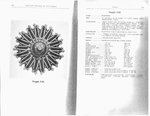I thought it was time to spice up the engine section it's been in the doldrums
So first off is the page out of Wilkerson's "Aircraft Engines of the World" is the Piaggio P.XII which of course powers Italy's Fortress the P.108.
Enjoy!!
So first off is the page out of Wilkerson's "Aircraft Engines of the World" is the Piaggio P.XII which of course powers Italy's Fortress the P.108.
Enjoy!!
Attachments
Last edited:


